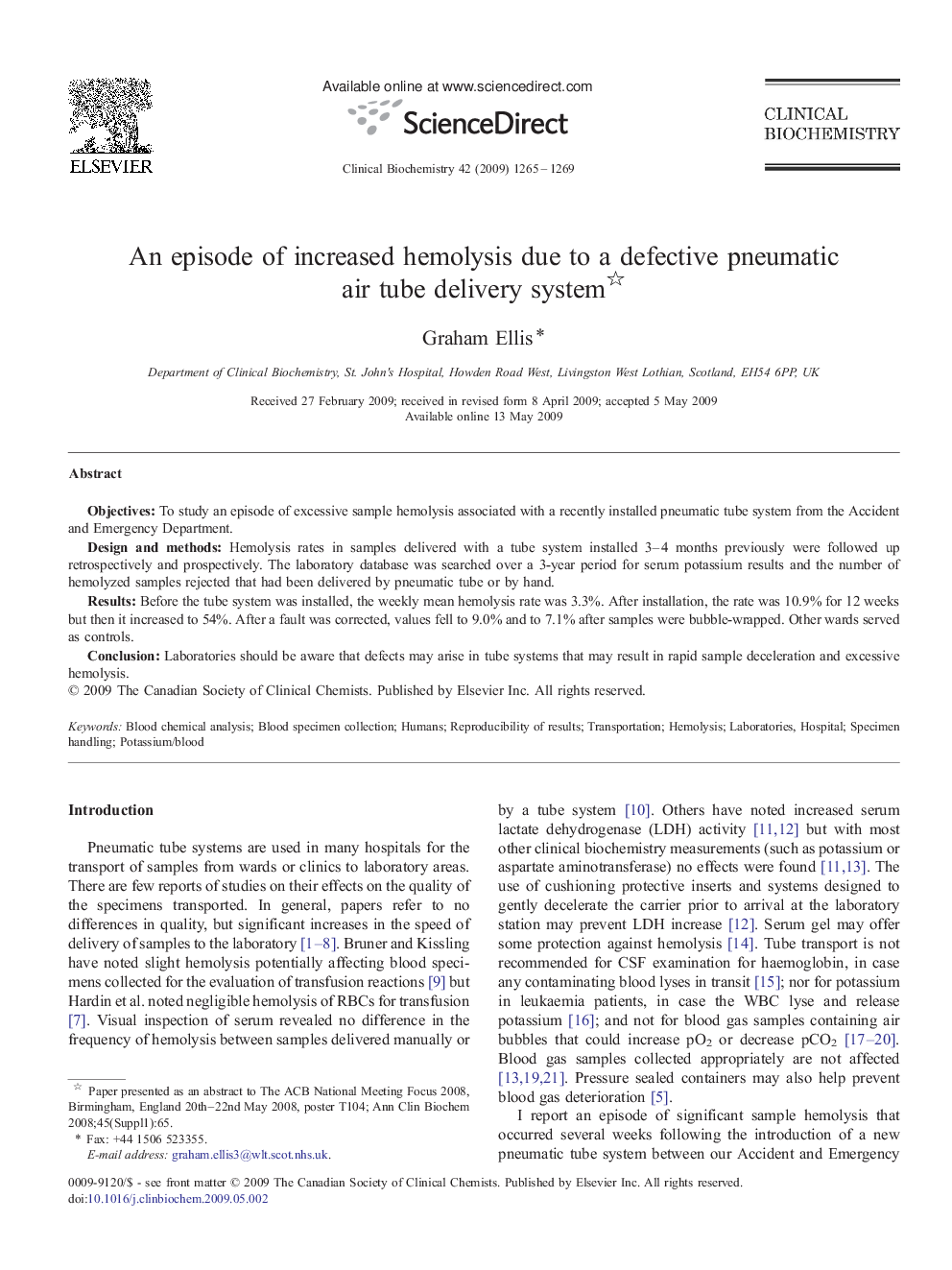| Article ID | Journal | Published Year | Pages | File Type |
|---|---|---|---|---|
| 1971339 | Clinical Biochemistry | 2009 | 5 Pages |
ObjectivesTo study an episode of excessive sample hemolysis associated with a recently installed pneumatic tube system from the Accident and Emergency Department.Design and methodsHemolysis rates in samples delivered with a tube system installed 3–4 months previously were followed up retrospectively and prospectively. The laboratory database was searched over a 3-year period for serum potassium results and the number of hemolyzed samples rejected that had been delivered by pneumatic tube or by hand.ResultsBefore the tube system was installed, the weekly mean hemolysis rate was 3.3%. After installation, the rate was 10.9% for 12 weeks but then it increased to 54%. After a fault was corrected, values fell to 9.0% and to 7.1% after samples were bubble-wrapped. Other wards served as controls.ConclusionLaboratories should be aware that defects may arise in tube systems that may result in rapid sample deceleration and excessive hemolysis.
